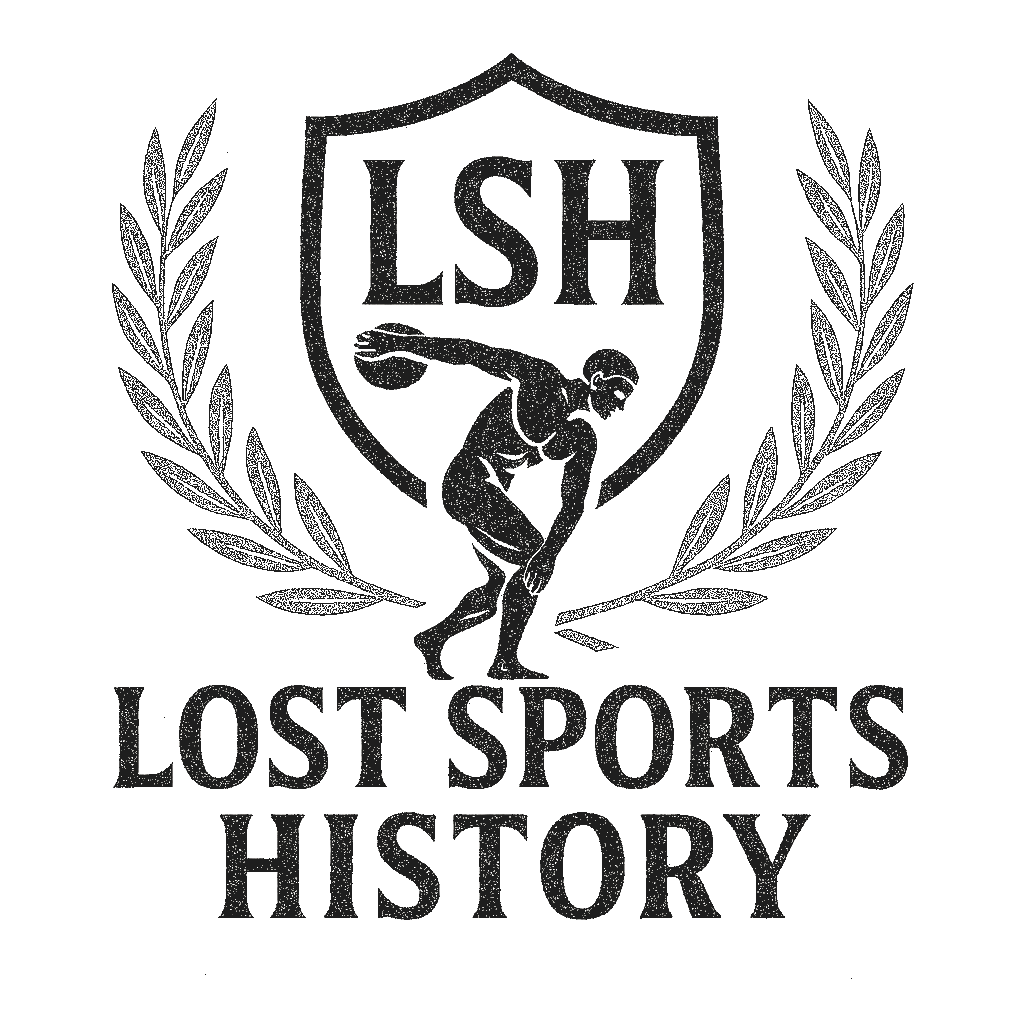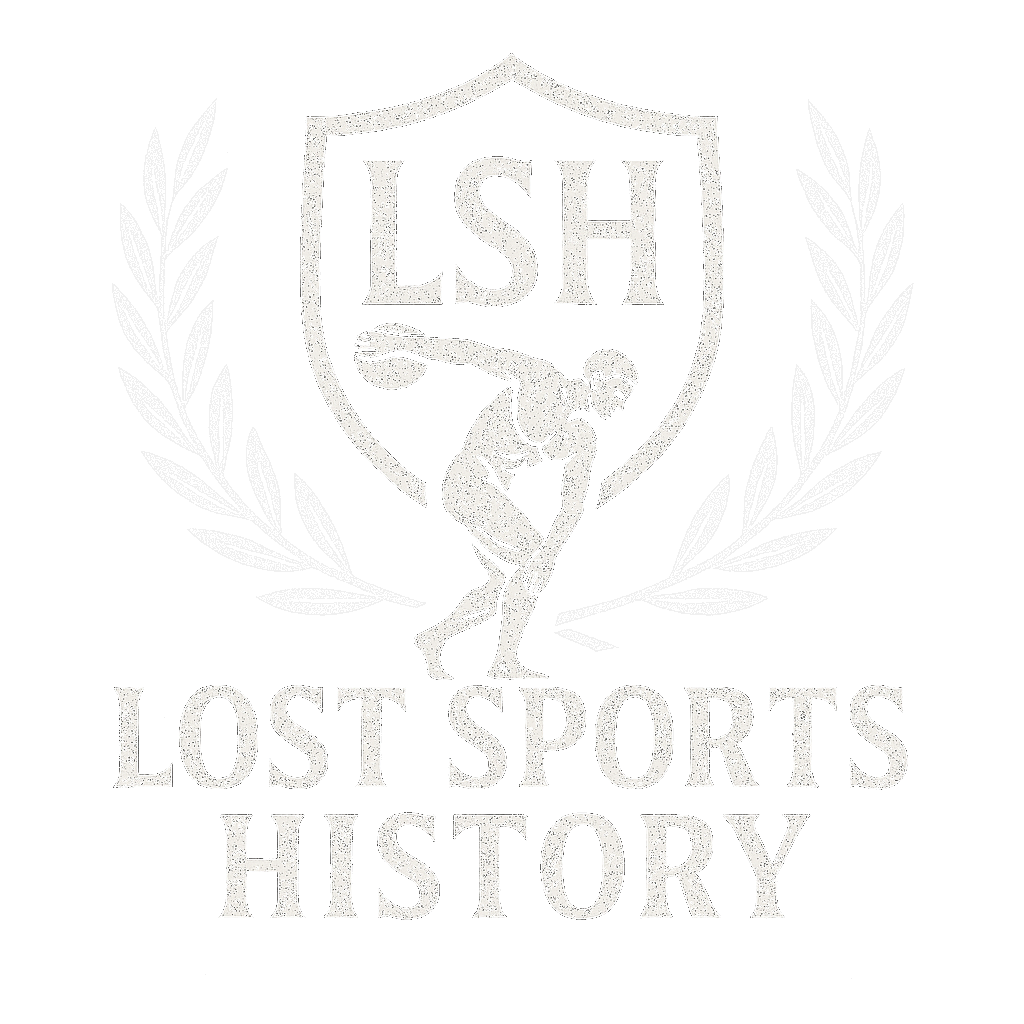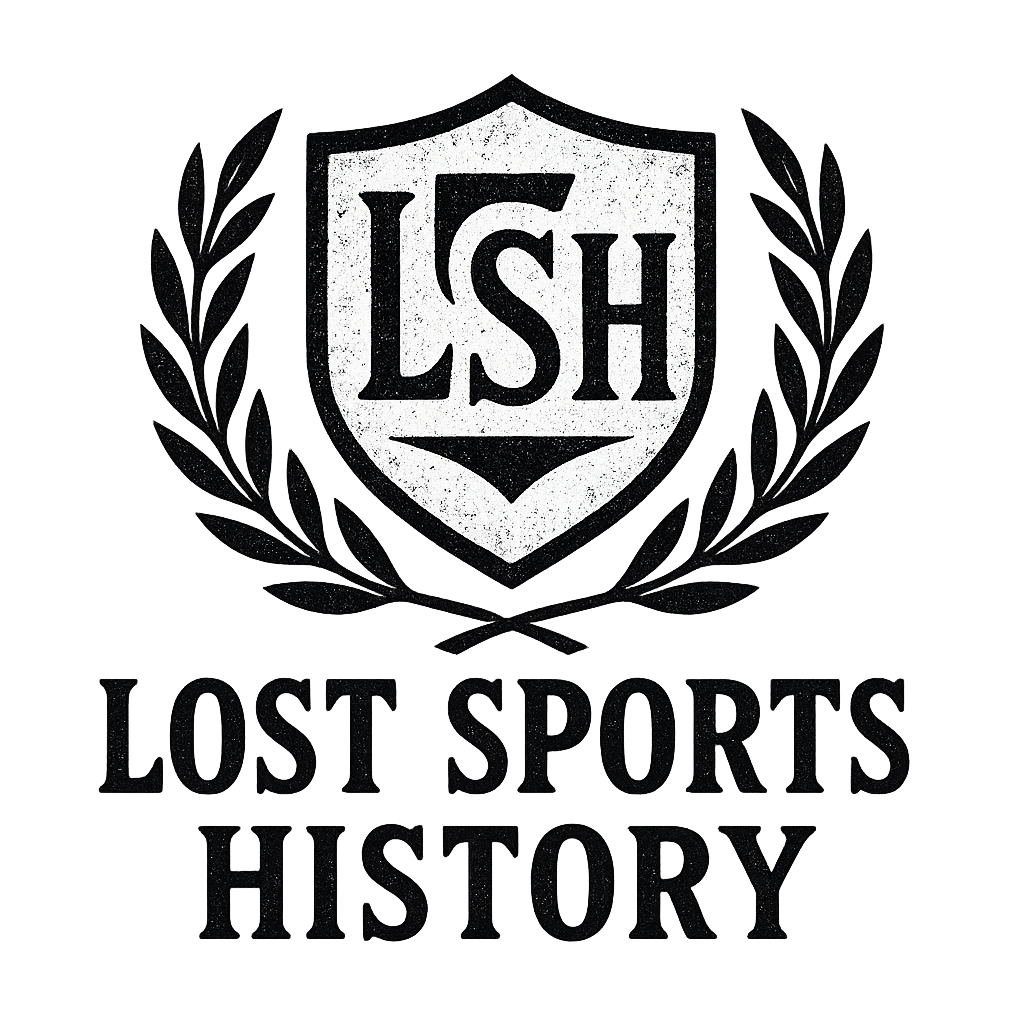Now Reading: How Modern Teams Are Reviving Viking Knattleikr
-
01
How Modern Teams Are Reviving Viking Knattleikr

How Modern Teams Are Reviving Viking Knattleikr
Deep within the icy fields of ancient Iceland, a game emerged that would capture the true spirit of Viking culture – Knattleikr. This intense ball sport, whose name simply means “ball game” in Old Norse, combined elements of what we now recognize in rugby, hurling, and lacrosse. But, is there such thing as revival of Knattleikr?
Imagine two teams using wooden sticks, fighting for control of a hard ball across rough land. The game required strength, skill, and strategic thinking – qualities highly valued in Viking society. Knattleikr served as:
- A training ground for warriors
- A test of physical strength
- A social gathering point for communities
- A way to settle disputes
Today, a passionate revival of Knattleikr is happening all over the world. Modern teams have made changes to this ancient sport for today’s players while keeping its main parts intact. From college campuses to cultural festivals, fans are bringing new energy into this centuries-old tradition, connecting Viking heritage with contemporary sports.
This revival represents more than just a game – it’s a living link to our ancestral past, uniting communities through the timeless attraction of competitive play.
The Historical Roots of Knattleikr
Knattleikr originated during the Viking Age and played a crucial role in Norse society. Archaeological findings in Scandinavia show that playing fields and ball-game equipment from the 9th century were discovered, indicating that Viking communities widely embraced this sport.
Evidence from Ancient Texts
Ancient Icelandic sagas, such as Grettis saga and Egils saga, offer detailed accounts of Knattleikr matches. These stories depict fierce competitions where players used wooden bats known as knatttre to hit a hard ball across icy fields. The sagas mention games lasting multiple days and attracting large crowds from nearby settlements.
Social Significance of the Game
Knattleikr held great social significance in Viking culture:
- Status Symbol: Skilled players earned respect and recognition within their communities.
- Political Arena: Matches served as neutral grounds for rival chieftains to showcase their power.
- Training Ground: Young warriors developed strength and tactical thinking through gameplay.
The Brutality of Matches
The sagas also reveal the brutal nature of Knattleikr matches, where players faced broken bones, severe injuries, and even death. One notable incident described in Grettis saga recounts a dispute between two players that escalated into a blood feud between their families.
Rules and Structure
While rules varied by region, certain elements remained consistent:
- Teams consisting of 6 to 50 players
- Designated playing fields called leikvǫllr
- Specific scoring zones
- Complex systems of fouls and penalties
These historical accounts portray Knattleikr as an intricate sport embodying Viking values such as strength, honor, and strategic thinking. The game’s framework contributed to maintaining social order while providing entertainment during long winter months.

From Ancient Ball Game to Modern Revival
The journey of Knattleikr from ancient times to the present day is a fascinating story of cultural preservation and adaptation. After its peak during the Viking Age, the game gradually declined during the medieval period as Christianity spread throughout Scandinavia, bringing new customs and traditions.
The 19th Century: Rediscovery through Nationalism
In the 19th century, there was a brief revival of interest in traditional sports as part of the Nordic romantic nationalist movement. Scholars and cultural enthusiasts began studying ancient texts, rediscovering descriptions of Knattleikr in the sagas. This academic interest laid the groundwork for future revival efforts.
The 1970s: Resurgence alongside Historical Reenactment
The modern revival of Knattleikr gained momentum in the 1970s with the rise of the historical reenactment movement. Living history groups in Iceland and Scandinavia started incorporating the game into their events, generating broader interest in this traditional sport.
Key Developments in the Modern Revival
Several significant developments have shaped the modern revival of Knattleikr:
- 1980s: First documented attempts to standardize modern rules
- 1990s: Formation of informal leagues in Iceland and Norway
- 2000s: Integration into Viking festivals worldwide
- 2010s: Adoption by historical martial arts groups
Balancing History and Modernity
The evolution of Knattleikr continues as practitioners strive to find a balance between historical authenticity and contemporary sporting needs. Modern teams have introduced safety equipment, structured gameplay periods, and clear scoring systems while still preserving the fundamental physical elements that defined the original sport.
Contemporary Teams Keeping the Spirit Alive
The modern Knattleikr landscape thrives with dedicated teams across North America and Europe. In Iceland, the Reykjavik Ravens stand as pioneers of the contemporary revival, hosting regular matches at the historic Þingvellir National Park. Their commitment to authenticity extends to using traditionally crafted wooden bats and leather balls.

U.S.-based teams have adapted unique approaches to the sport:
- Minnesota Norse – Established in 2015, they integrate historical reenactment elements into their gameplay
- New England Valkyries – Known for their mixed-gender teams and inclusive recruitment policies
- Pacific Northwest Warriors – Sponsors educational programs about Viking culture alongside regular matches
These teams collaborate with historical societies and cultural organizations to create authentic experiences. The Annual Midgard Tournament in Wisconsin draws teams from across North America, featuring:
- Traditional opening ceremonies
- Cultural workshops
- Equipment crafting demonstrations
- Youth training sessions
Community involvement extends beyond the playing field. Teams regularly participate in local festivals, museums events, and educational programs. The California Viking League partners with schools to introduce Norse sports history through interactive demonstrations.
Recent years have seen the emergence of regional leagues, with the Eastern Seaboard Alliance coordinating regular matches between teams from Maine to Virginia. These organized competitions help standardize modern rules while preserving traditional elements of the game.
College Clubs and Informal Tournaments: Spreading the Love for Knattleikr
College campuses have become unexpected hubs for Viking sports revival, with dedicated Knattleikr clubs sprouting across North American universities. These student-led organizations blend historical authenticity with collegiate sports culture, creating unique training programs and competitive events.
University of Minnesota’s Norse Athletic Club: Pioneering Collegiate Knattleikr
The University of Minnesota’s Norse Athletic Club pioneered collegiate Knattleikr in 2018, establishing a blueprint for other institutions. Their model combines weekly practice sessions with cultural education, attracting students from diverse academic backgrounds.
Informal Tournaments: Flourishing During Spring and Summer Months
Informal tournaments flourish during spring and summer months, with distinctive characteristics:
- Weekend Warriors Format: 2-3 day events hosted on open fields
- Mixed-Level Play: Experienced players mentor newcomers
- Cultural Integration: Traditional Viking meals and music between matches
- Flexible Team Structures: 6-12 players per side, adapting to attendance
Connecting College Teams: The Great Lakes Knattleikr Circuit
The Great Lakes Knattleikr Circuit connects college teams across five states, organizing regular meet-ups and seasonal championships. These gatherings have evolved into cultural festivals, drawing spectators and participants from local communities.
Adapting to Campus Safety Regulations: Modified Rulebooks
Student organizers have developed modified rulebooks that maintain the sport’s core elements while accommodating campus safety regulations. This adaptation has made Knattleikr accessible to a broader range of participants, fostering a sustainable growth pattern within academic settings.
Adapting the Rules for Safe Play: A Closer Look at Modern Gameplay Mechanics
Modern Knattleikr retains its competitive spirit while implementing crucial safety measures that distinguish it from its historical counterpart. The game rules have evolved significantly from the brutal matches described in Norse sagas, where serious injuries and even deaths were not uncommon.
Key Safety Modifications in Modern Gameplay:
- Protective gear requirements including helmets, mouth guards, and padding
- Designated “no-contact” zones to prevent dangerous collisions
- Structured referee system with clear penalty guidelines
- Standardized field dimensions and boundary markers
- Regulated equipment specifications for sticks and balls
The historical accounts describe players using wooden bats and hard balls made of wood or stone. Modern teams now use specially designed composite sticks and softer balls that minimize injury risk while maintaining authentic gameplay mechanics.
Current Game Structure:
- Two teams of 5-7 players
- Matches divided into timed periods
- Points awarded for successful goal scoring
- Clear rules for ball possession and turnover
- Defined physical contact limitations
These adaptations create a balanced experience that preserves the sport’s competitive nature while ensuring player safety. Teams still engage in physical contests for ball possession, but with regulated intensity levels and clear boundaries for acceptable contact.
The modern rulebook emphasizes skill development and strategic play over brute force. Players focus on mastering techniques like ball control, passing accuracy, and team coordination. This shift has made the sport more accessible to diverse participants while maintaining its distinctive Viking character.
Sveinaleikr: Introducing Children to the World of Viking Sports
Sveinaleikr, the child-friendly adaptation of Knattleikr, opens doors for young enthusiasts to experience Viking sports culture in a safe, engaging environment. This modified version maintains the spirit of the original game while incorporating essential safety measures and age-appropriate rules.
Key adaptations in Sveinaleikr include:
- Lighter Equipment: Soft foam balls replace traditional hard balls
- Modified Contact Rules: Gentle touching instead of full-body contact
- Smaller Playing Fields: Scaled-down areas suitable for children’s stamina
- Team-Building Focus: Emphasis on cooperation over competition
The educational value of Sveinaleikr extends beyond physical activity. Children learn about:
- Norse history and cultural traditions
- Strategic thinking and teamwork
- Physical coordination and spatial awareness
- Respect for historical sports heritage
Many modern Viking reenactment groups and cultural centers have integrated Sveinaleikr into their youth programs. These sessions often include storytelling elements, connecting children to Norse mythology while they play. Parents report increased interest in history and improved social skills among young participants.
The game’s structured yet playful nature creates an ideal stepping stone for children who might later transition to full Knattleikr. Youth leagues across Scandinavia and North America have seen steady growth, with annual tournaments drawing families from diverse backgrounds to celebrate this ancient sport.
Interestingly, the roots of such sports can be traced back to ancient warriors training, where rigorous physical activity was a norm. However, not all ancient sports were safe; some were banned and forbidden due to their dangerous nature. In contrast, some of these sports were known for their extreme challenges, making them some of the deadliest sports in history.
Despite these risks associated with certain historical sports, many have inspired today’s Olympic games, as seen in this article about 10 ancient sports that inspired today’s Olympic games.
Knattleikr’s Role in Promoting Norse Culture Today
The resurgence of Knattleikr, an ancient Norse sport, has sparked a cultural renaissance, bringing Norse traditions to life in modern communities. Local groups organizing regular Knattleikr matches create spaces where participants immerse themselves in Viking heritage beyond mere physical activity.
These gatherings serve as living museums, where players and spectators experience authentic aspects of Norse culture:
- Traditional Attire: Teams often wear period-appropriate clothing
- Ancient Customs: Pre-game rituals and ceremonies reflective of historical sporting practices
- Norse Language: Use of original terminology during matches
- Historical Crafts: Display of Viking-era equipment and artifacts
The social impact extends beyond the playing field. Knattleikr events bring together:
- History enthusiasts
- Cultural preservation groups
- Local artisans
- Educational institutions
Communities hosting Knattleikr matches report strengthened social bonds and increased interest in Norse heritage. The game acts as a gateway to deeper cultural exploration, inspiring participants to study Old Norse literature, traditional crafts, and Viking history.
Local museums and cultural centers have begun incorporating Knattleikr demonstrations into their programs, creating interactive experiences that connect visitors with Norse traditions. This integration of sport and cultural education has proven particularly effective in regions with strong Scandinavian roots, where Knattleikr helps preserve ancestral connections through active participation.
Furthermore, this revival of ancient sports like Knattleikr not only enriches our understanding of lost sports of the ancient world but also provides valuable insights into the nature of modern sports. However, it’s important to acknowledge that some ancient sports had their share of controversies, often involving rule bending and cheating.
The Impact of Media on Knattleikr’s Popularity: A Double-Edged Sword?
The rise of Viking-themed entertainment has brought attention to traditional Norse sports, especially knattleikr. Movies like The Northman (2022) have introduced millions to this ancient game, sparking curiosity and driving enthusiasts to explore its authentic roots.
How Media Portrays Knattleikr
Media portrayals often emphasize the dramatic aspects of knattleikr:
- Intense physical combat
- Ritualistic elements
- High-stakes matches
- Warrior culture connections
These dramatized depictions create both opportunities and challenges for modern knattleikr communities. The increased visibility attracts new participants, yet it also perpetuates misconceptions about the sport’s true nature.
Popular Culture’s Influence on Knattleikr
Popular culture’s influence has shaped public perception in unexpected ways:
“Every time a new Viking show or film comes out, we see a spike in interest. People come expecting brutal combat, but they stay for the community and cultural aspects.” – Erik Larsson, Knattleikr Team Captain, Minnesota Norse Cultural Society
The entertainment industry’s focus on violence can overshadow knattleikr’s strategic elements and team dynamics. Modern teams work to balance historical accuracy with contemporary sporting values, using media attention as a gateway to educate newcomers about Norse cultural heritage.
Social Media’s Role in Promoting Knattleikr
Social media platforms have become vital tools for knattleikr communities to counter Hollywood stereotypes, sharing authentic gameplay footage and highlighting the sport’s accessibility to players of all skill levels.
Challenges Faced by Modern Teams in Reviving Authenticity While Ensuring Competitiveness and Inclusivity
Modern Knattleikr teams face distinct challenges in balancing historical accuracy with contemporary sporting standards. The scarcity of detailed historical records creates uncertainty about authentic gameplay mechanics, leaving teams to interpret and adapt ancient practices.
Key Obstacles in Modern Revival:
- Safety vs. Authenticity – Historical accounts describe brutal matches with serious injuries. Modern teams must modify these aggressive elements while preserving the sport’s essential character
- Equipment Authenticity – Creating historically accurate equipment proves challenging, as ancient materials like wood and leather require special crafting techniques
- Gender Integration – While Viking-age Knattleikr was male-dominated, modern teams work to create inclusive environments for all participants
- Skill Development – Teaching new players requires standardized training methods, yet historical training techniques remain largely unknown
Teams also grapple with varying interpretations of rules across different regions. Some groups prioritize historical accuracy, using traditional wooden bats and minimal protective gear. Others adopt modern safety equipment and modified rules to attract newer participants.
The challenge of maintaining competitive balance presents another hurdle. Teams must establish fair matchmaking systems while accommodating players of diverse skill levels and physical capabilities. This balance becomes crucial for sustaining long-term participant engagement and growing the sport’s community.
Looking Ahead: Future Prospects for a Thriving Global Community Around Knattleikr
The global reach of Knattleikr shows promising signs of expansion beyond its Nordic roots. Social media platforms have created dedicated communities where enthusiasts share training techniques, event announcements, and cultural insights. These digital connections spark international interest and foster cross-cultural exchanges between teams.
Several key developments point to sustained growth:
- Emerging Markets: Countries like Germany, Canada, and Australia have shown increasing interest in establishing Knattleikr leagues
- Professional Development: Training programs and certification systems for coaches and referees are under development
- Equipment Innovation: Sports manufacturers are exploring specialized gear designed specifically for Knattleikr
The sustainability of Knattleikr’s revival relies on strategic partnerships with:
- Historical reenactment societies
- Sports tourism organizations
- Cultural heritage institutions
- Educational facilities
Recent demographic data reveals a surge in youth participation, particularly in urban areas where Viking heritage centers have established permanent facilities. This growing interest from younger generations suggests a strong foundation for long-term sustainability.
The digital age brings opportunities for virtual tournaments and online training sessions, allowing remote communities to participate in the sport. These technological adaptations create pathways for global standardization while preserving local variations of play.
Conclusion
The Modern Knattleikr Revival is more than just a recreation of an ancient game. It connects us to our Norse ancestors, bringing communities together through physical challenges and appreciation of history.
Today’s Knattleikr shows the enduring spirit of Viking culture, adapted for modern times while still keeping its essence. The game’s transformation from brutal Viking battlefield preparation to an inclusive community sport demonstrates how ancient traditions can evolve to meet contemporary needs.
The growing enthusiasm for Knattleikr across different countries, age groups, and skill levels points to a deeper human desire to connect with our ancestral roots. Through each match played, every tournament organized, and all communities united, we honor the legacy of the Vikings while forging our own path forward.
This ancient sport now serves as a bridge between past and present, proving that the spirit of Viking culture lives on – not through conquest, but through camaraderie, competition, and shared cultural celebration.
















